Durello Wine
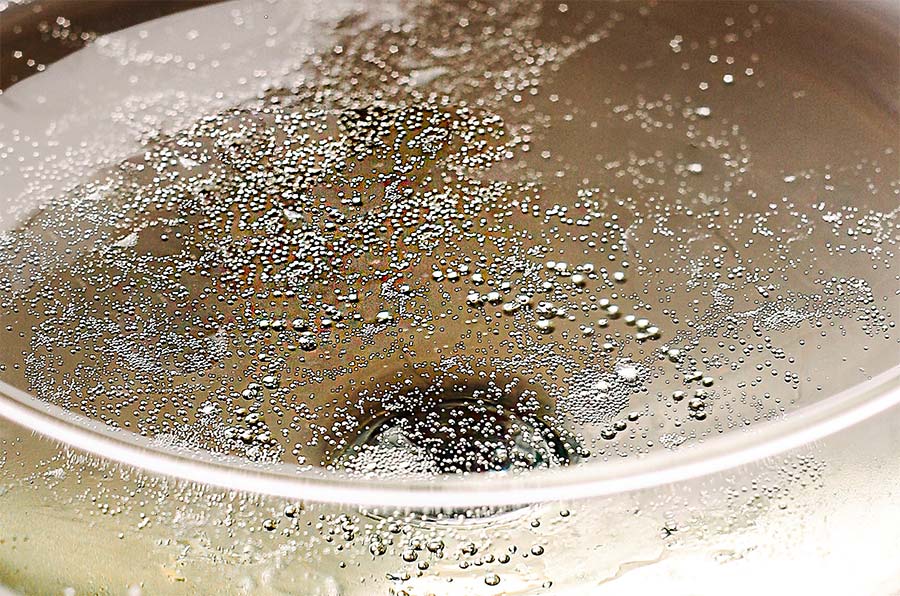
Durello is a still white wine, but most importantly a sparkling wine, produced with Durella grapes in the Lessini Mountains, the pre-Alps of Verona, in the provinces of Verona and Vicenza. It is not very well known yet, but more and more are its enthusiasts.
Info and cellar tours:
+39 333 2199 645 info@veronissima.com P.I. 03616420232 C.F. CPPMHL74L13L781C
Classic Method
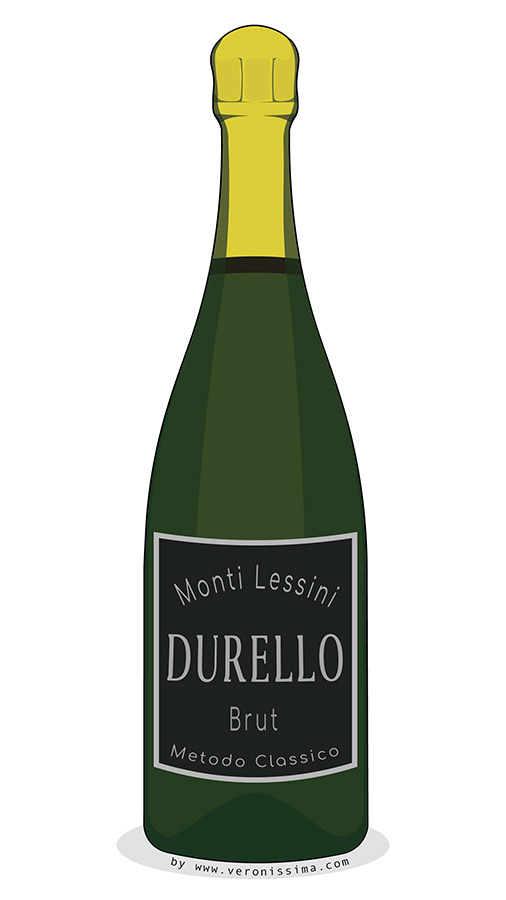
The success of recent years comes from the intuition to use Durella grapes for sparkling wine making. The acidity and minerality of Durella grapes allow for very long ageing on yeasts: 48, 60 and even 120 months. The result is complexity and fine perlage, typical of the great sparkling wines, but still at a reasonable price.
BUY NOWDurello Wine Territory
The eastern Lessini Mountains give the name to the Durello wine. It is a territory rich in history and natural beauty, still wild and uncontaminated. Perfect destination for a wine tour to discover new wines.
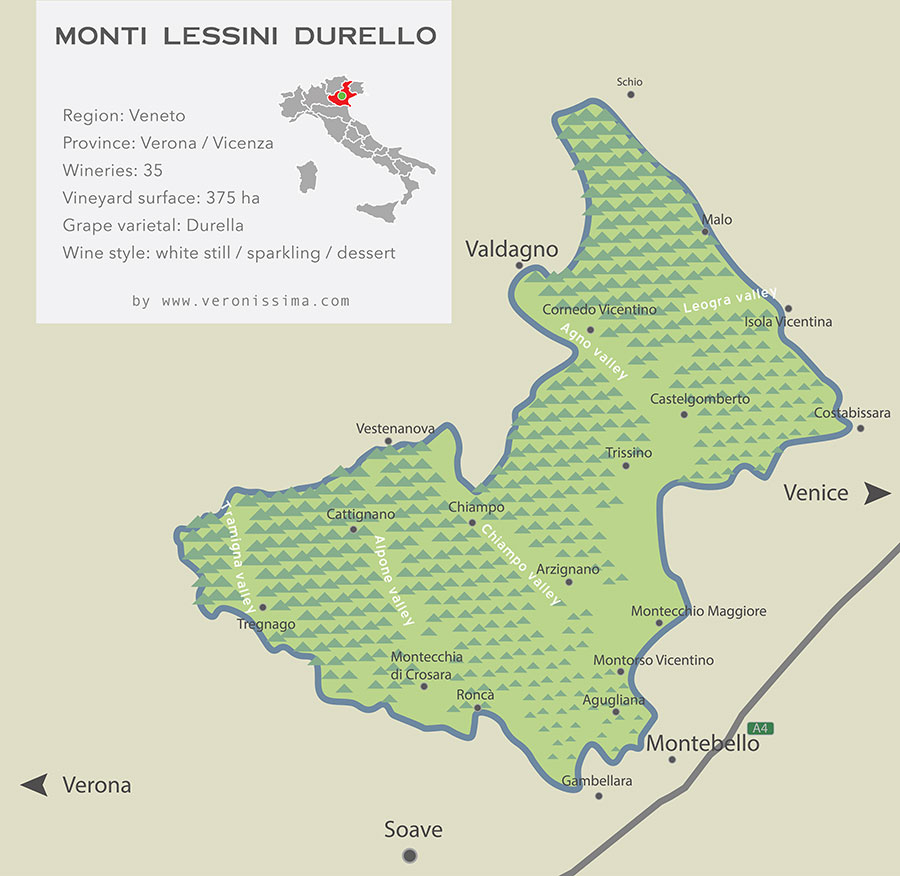
The denomination (DOC) Monti Lessini Durello extends over the slopes and plateaus of the valleys that cross the mountain range. Illasi, Tramigna, Alpone valleys in the Veronese territory. Chiampo, Agno, Leogra valleys in the province of Vicenza.
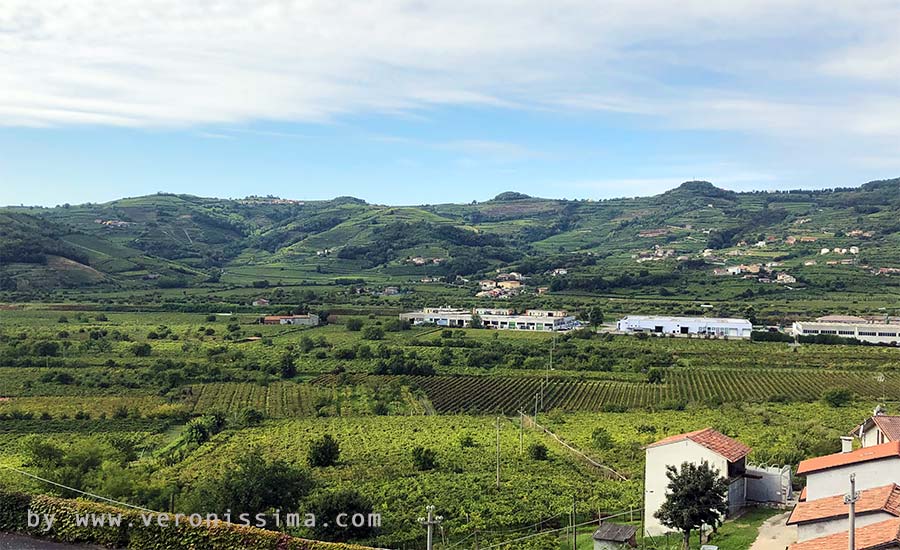
The vineyards planted with Durella grapes cover an area of only 400 hectares (988 acres), spread over 20,000 hectares (50,000 acres) up to a height of 500 meters (1,640 ft) above sea level.
Durello was awarded the DOC (Italian quality certification) in 2011.
About 35 wineries are part of the Producer Association Consortium (updated 2020).
The wineries we visit often enjoy spectacular views of the valleys below.
Durella Grape
Durello wine is as much an expression of a territory as of a grape: Durella. It is a very ancient variety, mentioned in manuscripts and communal laws as early as 1200. For the thickness of its skin it was called Durasena, from the Latin Durus Acinus (meaning "hard berry"). In 1700 it was widespread in the Vicenza area and on the eastern side of the Veronese territory.
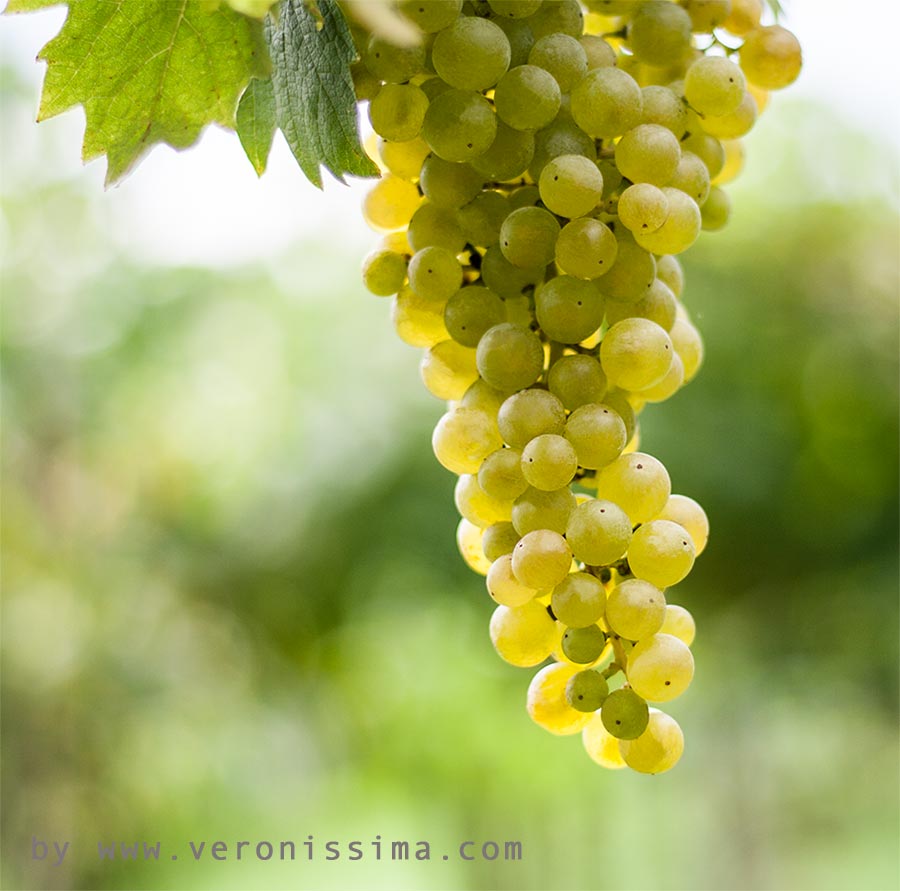
The Durella bunch is quite small and compact.
The berries have a thick, almost leathery skin.
Even when fully ripe, the taste remains acidic and tannic.
It is cultivated mostly with the pergola system, with the vine growing tall creating a sort of canopy.
The volcanic soil rich in minerals where Durella grows luxuriantly gives even more flavor and "hardness" to the wine. Due to its characteristics in some areas this variety is also called "Rabbiosa" ("enraged") and "Cagnina" ("canine").
The Terroir of Durello
Ancient Volcanos
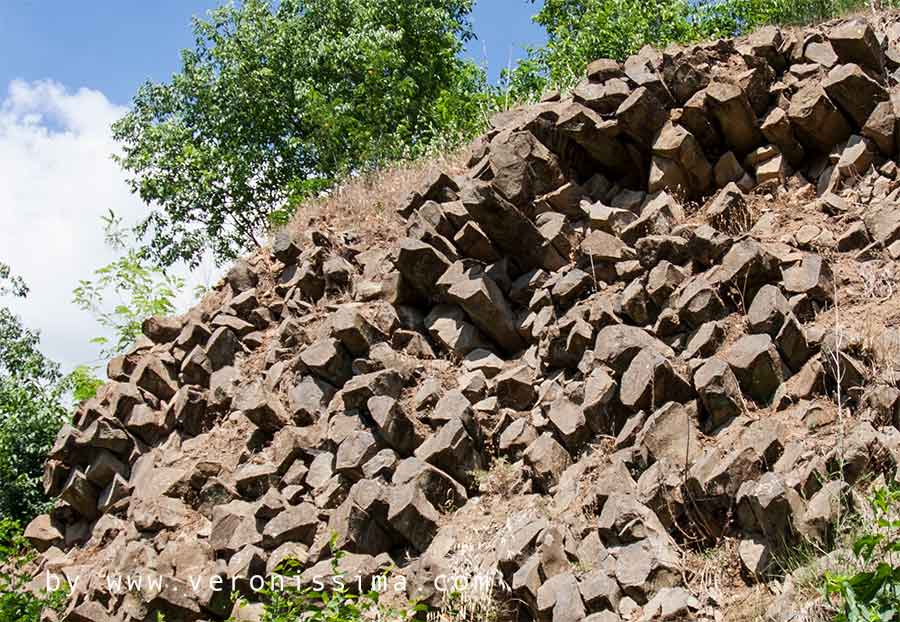
The territory where Durella grows is full of volcanic soil. 50 million years ago instead of the Lessini Mountains there was a tropical sea rich in marine animals and corals. This idyllic environment was shattered by volcanic eruptions and lava flows. Today the sea and volcanoes no longer exist. The continental drift has given life to the Alps and the Pre-Alps like the Lessini Mountains, but traces of those eruptions are still present.
Columnar Basalt
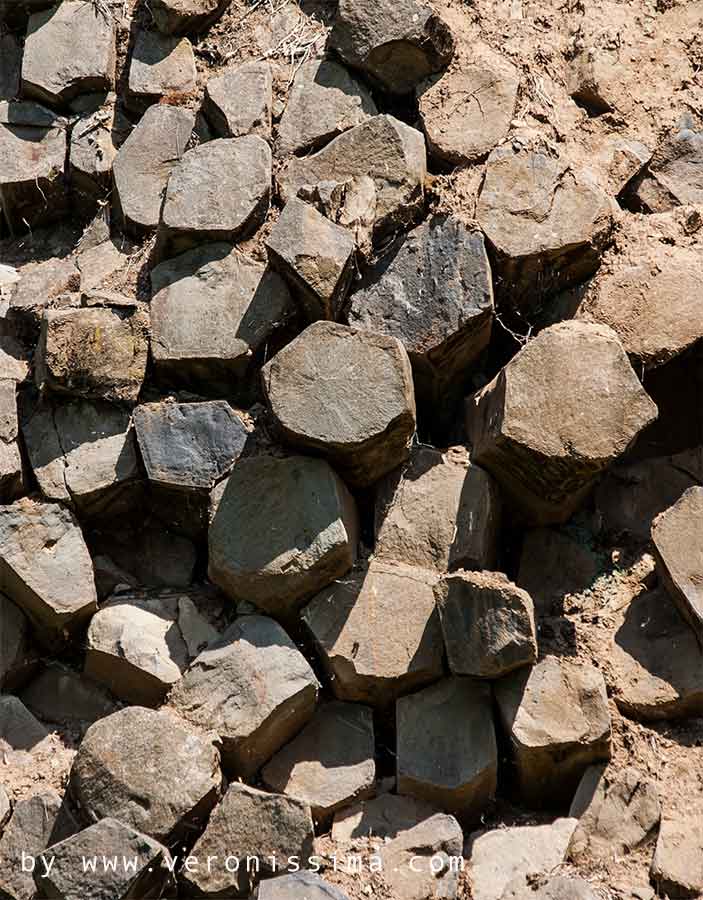
The production area of Durello wine is in fact rich in basalt, a type of solidified lava. When lava comes into contact with air it cools quickly. Under particular conditions it forms very regular longitudinal hexagonal section fractures. These hexagonal columns are so perfect that they look as if man-made. You can see these strange geological formations especially in the towns of Gambellara and San Giovanni Ilarione.
This type of soil is rich in iron, magnesium, silicon and many other elements. It is ideal for the production of white wines of great mineral structure such as Soave, Gambellara and of course Durello.
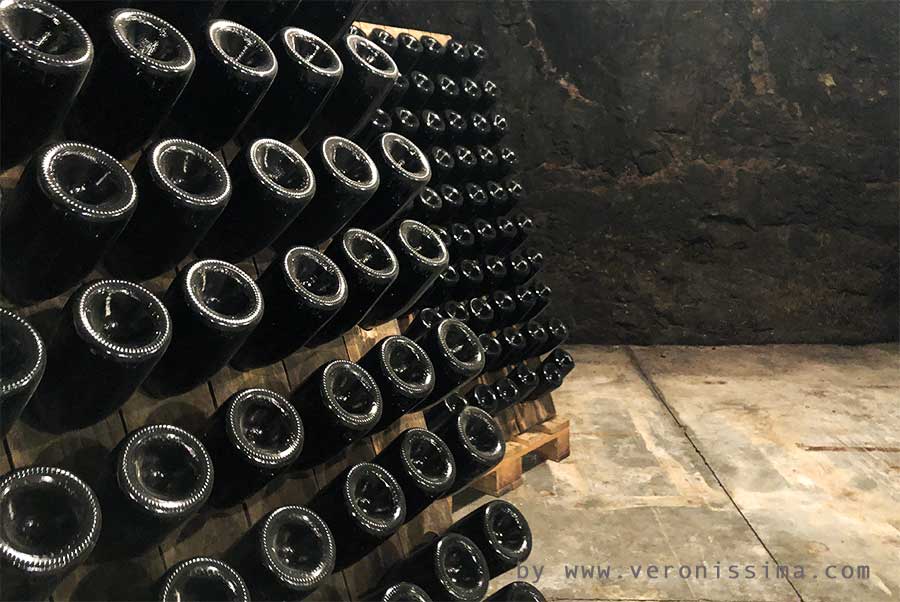
Some of Durello's cellars are literally dug into the hard, compact black volcanic rock.
Monti Lessini Durello
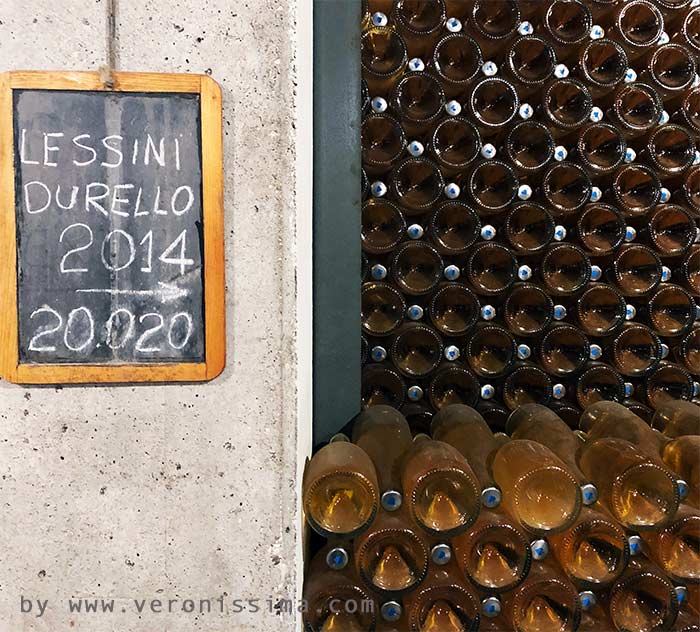
The characteristics of the Durella grape combined with the type of soil produce a wine that in the past was difficult to "manage". Only few appreciated its great acidity and flavour. They drunk it only locally, sometimes watered down, or used as a blending wine.
Still White Wine
Modern oenology and the perseverance of producers turned what seemed to be weak points into strengths. They understood that acidity and poliphenols granted Durello great longevity. It is a white wine that can rest in the cellar for up to ten years with surprising results. With a long aging period the acidity softens but keeps the wine alive. In the meantime great complexity and harmony of flavors develop.
Tasting
Citrus fruits in all their nuances, pear and exotic fruit, boxwood, aromatic herbs notes, and a pleasant bitter finish are some of the characteristics of the Durello tasting. Over time the minerality comes out with hints of flint, sulphur, rubber and solvent, reminiscent of certain Chablis and Riesling.Sparkling Wine
The brilliant intuition was to understand that the Durello is an excellent base for sparkling wine making.
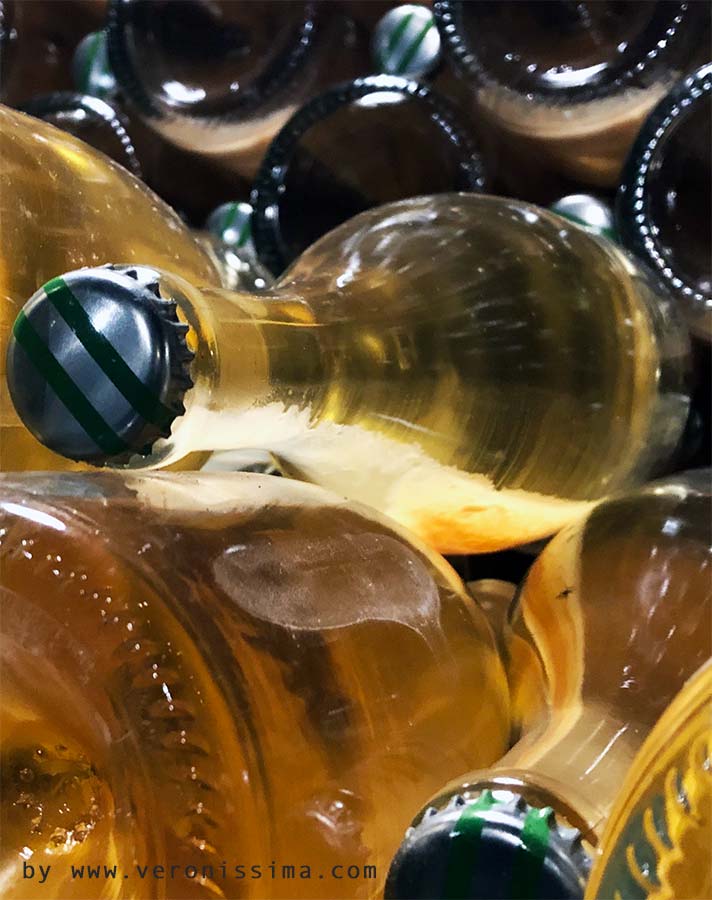
Focus: Classic Sparkling Method
With the first fermentation the grape must transforms into base wine.
The winemaker adds Sugar and yeast to the base wine and put it into bottles sealed with crown caps.
This trigger a second fermentation that produces carbon dioxide. As the bottle is sealed, CO2 remains inside and dissolves in the liquid producing the characteristic bubbles.
The Charmat method reproduces the same process in large, pressurised tanks. In this way there is a cost reduction but the product is simpler.
With the classic method Durello expresses its best. This is the type that is winning more and more enthusiasts. Also thanks to the excellent value for money in comparison with more famous products.
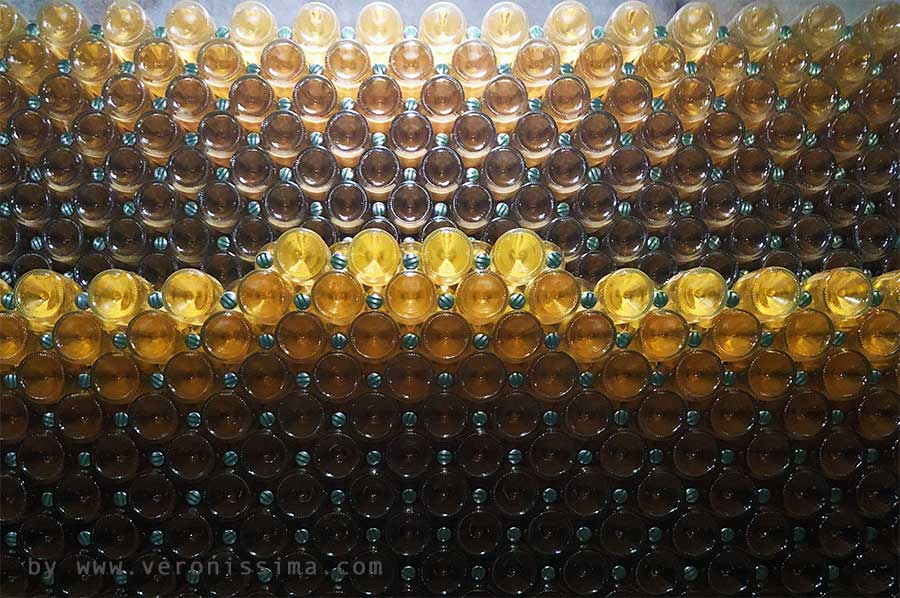
Durello Winery Tour
When you visit a winery that produces classic method sparkling wine such as Durello you will not find the usual oak barrels, but large piles of bottles stacked horizontally. After the fermentation that produces the bubbles, the wine refines for a certain period of time. The yeasts, having exhausted the sugar that feeds them, settle on the bottom. As they degrade, they release the typical aromas of classic method sparkling wines: bread crust, brioche, etc...
The second fermentation inside the bottle balances the acidity of the wine, produces persistent bubbles and gives the wine its extraordinary elegance and complexity.
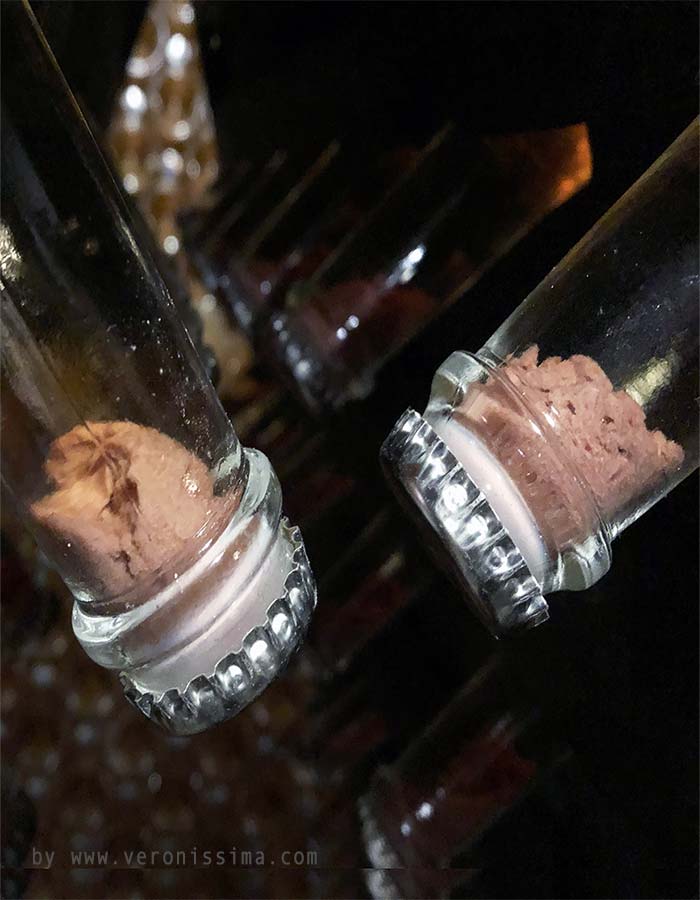
Focus: The Remuage
Before marketing the classic method sparkling wine, the yeasts deposited in the bottle must be removed.
Every day the bottle is shaken and rotated a quarter turn. At the same time the bottle it is inclined until it reaches a vertical position with the tip down. This operation is called remuage and can last one or two weeks.
It used to be done by hand using special perforated wooden racks called pupitre.
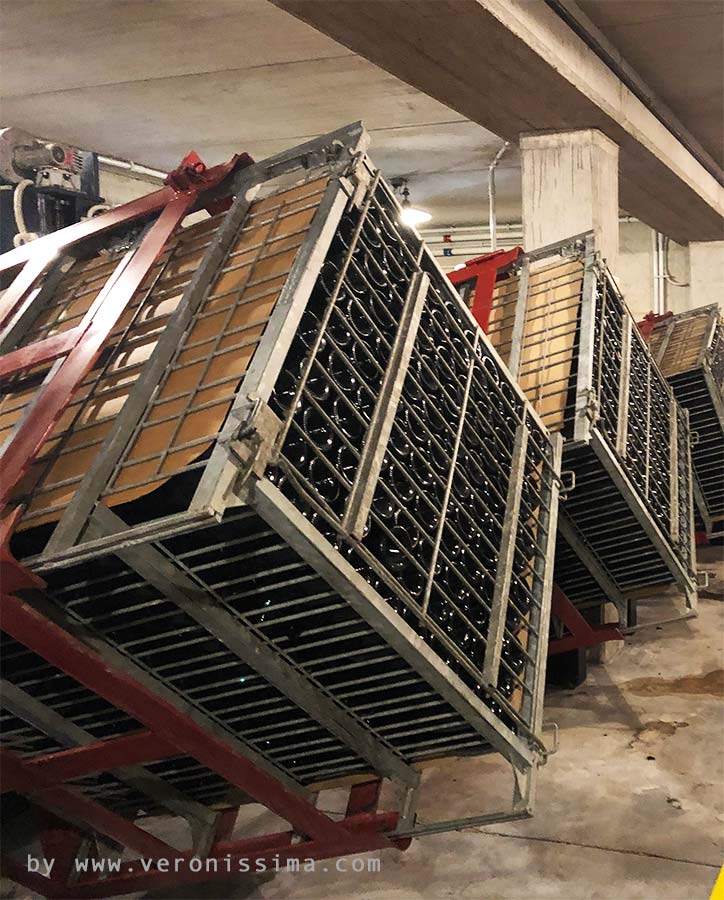
Focus: Disgorging
Today they use mechanized and computerized systems that perform automated remouage of large quantities of bottles in one time.
The yeasts accumulate at the tip which is then immersed in a freezing liquid. The cap is removed and the pressure expels the small "icicle" that incorporates the yeast.
The bottle is then topped up, corked and labelled. The sparkling Durello classic method is ready.
Durello Passito
To go with the dessert there is the Monti Lessini Durello Passito. It is produced with semi-dried Durella grapes.
The sweetness of the high residual sugar is balanced by the acidity and minerality typical of the variety. The result is a very balanced and elegant wine. Perfect for desserts but also for aged and blue cheeses.
Food Pairing
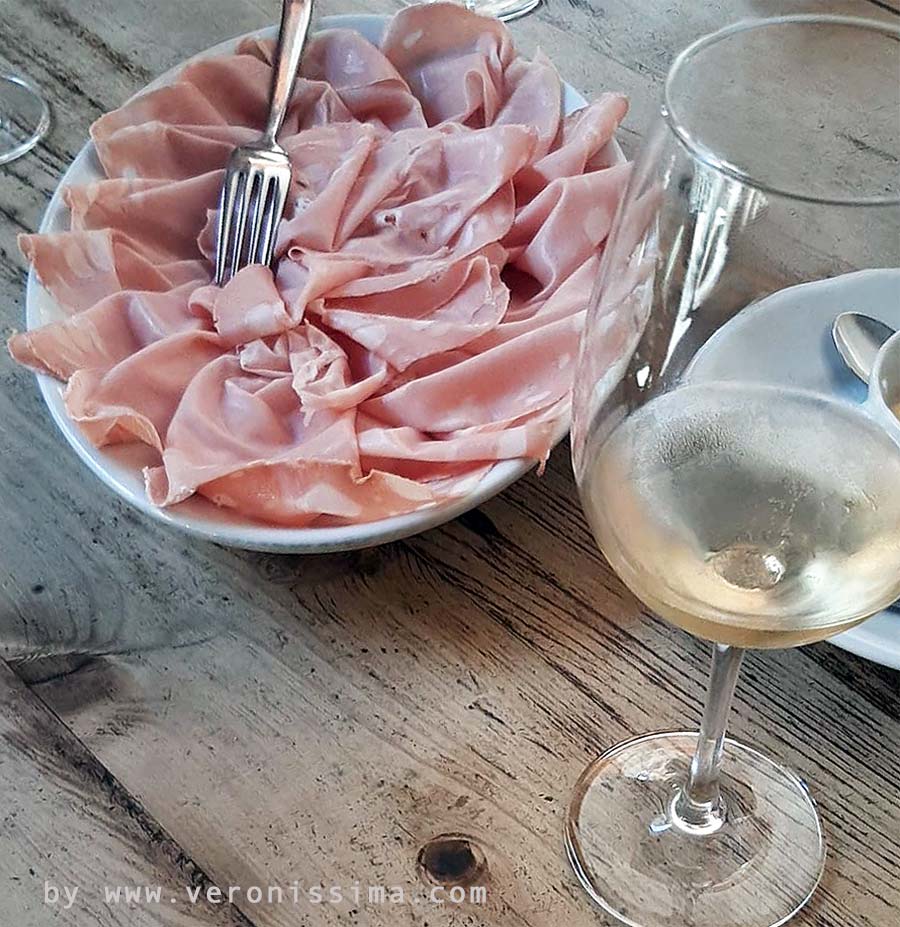
Classic method sparkling wines have an image associated with luxury and special occasions. Yet among the pairings that give more satisfaction there are those with simple and humble foods such as mortadella (bologna) or soppressa veneta (fatty salami typical of Veneto). The acidity and the bubbles have the capacity to "degrease" the palate and renew the taste of food at every mouthful.
The great structure of Durello wine, both still and sparkling, is able to support the intense aroma of these cold cuts.
Another typical combination is with cod dishes from the Veneto and Vicenza tradition.
Durello is a very versatile wine. It also goes well with tasty fish, spicy and fatty meats and mature cheeses.
Visit Durello Wine Cellars
There are still few wineries that produce Durello wine. Some of these are large cooperative companies with rather standardized products and industrial processes.
Then there are small family-run cellars with wines that are the pure expression of the territory in a welcoming and characteristic environment. The experience here is involving and authentic. Among my favourite wineries: Casa Cecchin, Fongaro, Gianni Tessari, Sandro De Bruno.
A visit to the cellars that produce Durello is an opportunity to get to know the Eastern Lessini. It is an area rich in history, traditions and gastromomic products such as cherries, soppressa, Monte Veronese cheese, bogoni (snails), the delicate olive oil.
You Should Visit
It is also possible to combine a visit to the Durello wine cellars with the area's sites of interest.
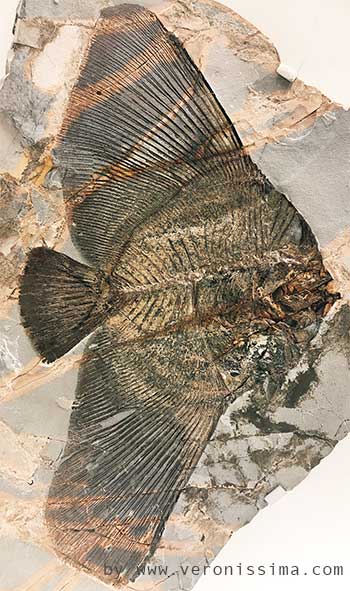
Bolca and the Fossils Museum
In the upper Alpone valley, the westernmost of the Durello valleys, there is one of the most exceptional fossil deposits in the world. Tropical fishes, plants, reptiles, the entire ecosystem of a coral lagoon petrified to the smallest detail millions of years ago, perhaps due to cyclical volcanic eruptions. Precisely that same eruptive activity so important today for the unique taste of Durello wine.
The Bolca site is well known among fossils collectors all over the world. There is a museum and for the little ones it is also possible to look for fossils among the stones of Bolca.
Romeo and Juliet's Castles
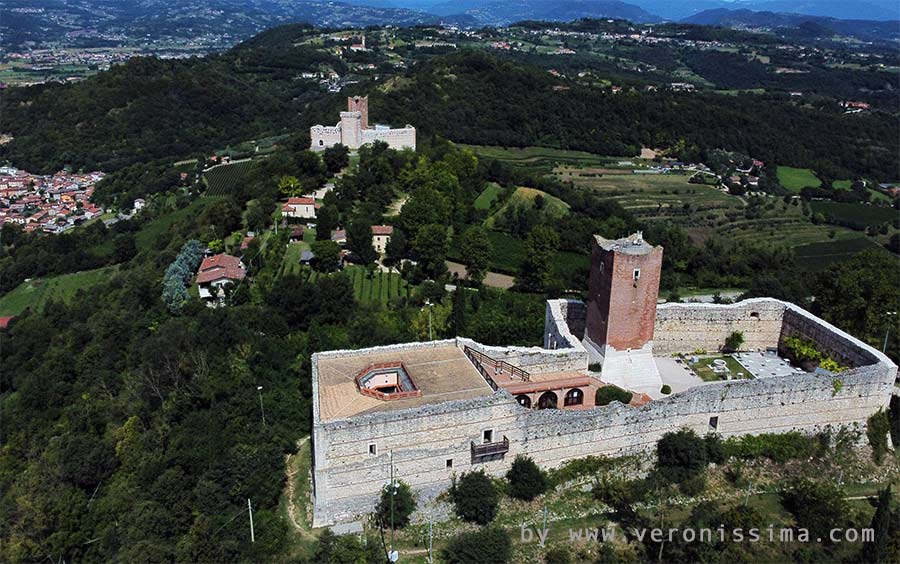
In Montecchio Maggiore, in the Vicenza hills where Durello and Gambellara wine are produced, there is a place linked to the legend of Romeo and Juliet. Not so much to the plot as to the birth of the story. They say that Luigi da Porto, the first to write about the two unfortunate lovers of Verona, imagined the two rival families looking at the castles facing each other on top of a hill. They are two Scala family fortresses from the 1300s.
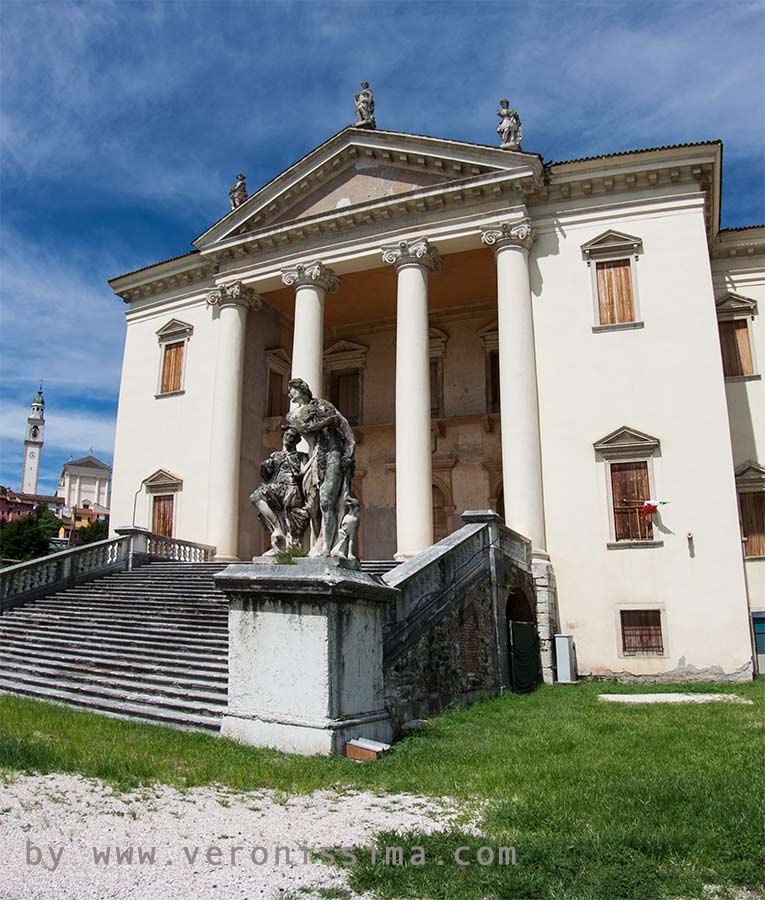
Villa Barbaran da Porto
Luigi da Porto was a noble knight. He was wounded in battle at the beginning of the 16th century and spent a long period of convalescence in his father's house in Montorso Vicentino: Villa Barbaran da Porto, a splendid example of a Venetian villa.
Immobilized in bed he spent his days writing poems and stories. Among them the story of Romeo and Juliet that sixty years later inspired Shakespeare. From the villa you can see the so-called Romeo and Juliet's castles.
If you want to know more
For more information about Durello wine, visits and tastings in the cellars of the production area, guided wine and food tours in the eastern Verona province:
+39 333 2199 645
info@veronissima.com

 IT
IT 日本
日本 DE
DE FR
FR 中文
中文 ES
ES
